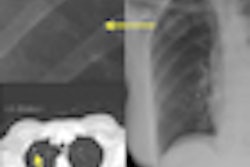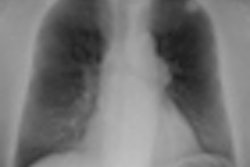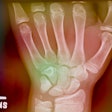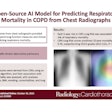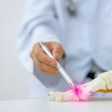Patients with high blood glucose levels are at increased risk of contrast-induced acute kidney injury (CI-AKI) after invasive coronary angiography, according to a just-published study of thousands of patients in the Journal of the American College of Cardiology.
But the study also found that risk was not elevated in diabetic patients undergoing the procedure, said researchers from Saint Luke's Hospital in Kansas City, MO, and five other U.S. centers.
Although diabetes is a known risk factor for CI-AKI in angiography patients, whether elevated preprocedural glucose levels are associated with higher risk for CI-AKI is unknown, wrote Dr. Joshua Stolker and colleagues "We sought to evaluate whether preprocedural glucose levels are associated with contrast-induced acute kidney injury (CI-AKI) after coronary angiography," they wrote (JACC, April 6, 2010, Vol. 55:14, pp. 1,441-1,443).
The researchers evaluated 6,358 patients with acute myocardial infarctions who underwent invasive angiography, stratifying patients into one of five preprocedural glucose groups:
- < 110 mg/dL
- 110 to < 140 mg/dL
- 140 to < 170 mg/dL
- 170 to < 200 mg/dL
- ≥ 200 mg/dL
Logistic regression was used to evaluate the relationship between glucose and CI-AKI in the cohort overall, and then in patients with and without diagnosed diabetes mellitus, using a primary outcome of ≥ 0.3 mg/dL absolute or ≥ 50% relative serum creatinine increase during 48 hours after the procedure.
The results showed a strong association between glucose and CI-AKI risk in patients without diabetes. CI-AKI rates across the five glucose groups from lowest to highest were 8.2%, 9.9%, 12.4%, 14.9%, and 24.3% (p < 0.001).
However, there was no significant association between CI-AKI in patients with diabetes, where CI-AKI rates across the five glucose groups from lowest to highest were 20.9%, 16.1%, 16.3%, 14.8%, and 19.2%, respectively (p = 0.24; p for glucose x diabetes interaction < 0.001).
When adjusted for confounders including baseline glomerular filtration rate, the relationship between higher glucose and greater CI-AKI risk persisted in patients without diabetes, but not in patients with established diabetes.
Elevated preprocedural glucose is associated with greater risk for CI-AKI in patients without known diabetes who undergo coronary angiography in the setting of acute myocardial infarction, the authors concluded. Measuresused to prevent CI-AKI should be considered in these patients, they wrote.
By Eric Barnes
AuntMinnie.com staff writer
March 31, 2010
Related Reading
Coronary CT angiography identifies high-risk diabetics, March 18, 2010
Coronary CTA quality dips in patients with high calcium scores, March 18, 2010
Old-fashioned risk factors best for predicting heart disease, October 6, 2009
Copyright © 2010 AuntMinnie.com





